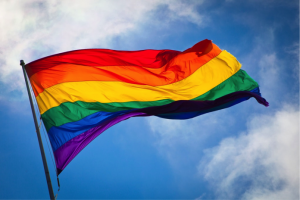side by side: why lgbtiq inclusion is important
‘Ladies and gentlemen, and those who are yet to make up their minds…’ Would you be surprised if I told you that this was a pre-game announcement at the football?
Last weekend, the inaugural Pride Game took place between St Kilda and the Sydney Swans, a game that aimed to celebrate diversity, as well as support members of the LGBTIQ community in Australian Rules. What looked to be a competitive match in the first half ended in a second half blowout, with the Swans winning by 70 points.
Of course, there were all the little symbolic touches – the 50 metre lines painted rainbow, the goal umpires waving rainbow flags, a pre-game performance by the cast of upcoming show Kinky Boots. However, all of this was minor in comparison to what the match really meant for LGBTIQ supporters of AFL, and sport more widely.
The 2015 release of ‘Out on the Fields’, an international study on homophobia in sport, revealed that almost 80% of respondents believe that openly gay, lesbian and bisexual fans are unsafe as supporters of sport. Clearly, issues with homophobia and transphobia are prevalent at all levels – from LGBTIQ athletes down to fans and viewers.
In the lead up to the match, some social commentators suggested that it would be the perfect opportunity for AFL players to come out. In 2012, the first Australian Rules player to come out to national media at any level was Jason Ball, playing for the Yarra Glen Football Club. Ball has been a driving force behind petitioning the AFL for a Pride Round, as well as taking more concrete action in saying no to homophobia. He proudly walked out onto Etihad Stadium last weekend to toss the coin before the game.
Former Hawthorn premiership player Russell Greene suggested that ‘four or five boys get together’ and come out at the same time, to help break down stereotypes and provide support for one another. Greene has admitted shame for his use of homophobic slurs during his playing career in the 1970s and 80s, with his gay son, Brent, speaking out about shunning Australian Rules due to his discomfort with the sport’s culture.
However, people need to avoid making assumptions about what’s best for individuals and allow people to make such personal decisions in their own time. Sometimes, although likely not in Greene’s case, these comments come down to over-simplified and simply untrue assertions about what life is like today for LGBTIQ people, and athletes in particular.
If you needed an example of rife homophobia to combat such assertions off the top of your head (although I’m guessing you probably already have numerous examples), look no further than last week’s disgraceful article by Nico Hines on The Daily Beast.
For those who missed it, Hines downloaded and used the app Grindr at the Olympic Village in Rio, writing about his experience and making obvious references to ‘anonymous’ closeted athletes. He claims that upon making contact with athletes, he let them know that he was actually a journalist, a straight man with a wife and children, in what reeks of a ‘gotcha!’ moment. Totally ethical, right?
What he probably considered to be a radical social experiment instead was a dangerous and downright offensive jab at LGBTIQ athletes. Hines’ article put them at risk, opening them up to ridicule and vilification, particularly for athletes from countries where homophobia is enshrined in law. The Daily Beast initially responded by editing out details that ‘obviously’ identified athletes, then taking down the piece the same evening and later publishing an apology.
Mark Joseph Stern of Slate describes Hines as both ‘tittering with condescension’ about gay athletes and their use of Grindr, but on a more sinister level, appearing to ‘take pleasure in luring’ the athletes in order to out them online. If ever there was a reminder of why we need to take action, it’s something like this.
Going back to the AFL’s actions, a number of clubs have LGBTIQ supporter groups. These groups provide safe spaces for supporters to enjoy the game and meet others, as well as more widely advocate for the removal of homophobia from the sport’s culture. Essendon has the Purple Bombers, St Kilda with the Pride Saints, Melbourne has the Ruby Demons and North Melbourne with the Blue Roos.
What actions like these mean for LGBTIQ supporters and athletes, can best be summed up by Brandon Cook in his piece for Same Same on the Pride Game. Brandon grew up in a footy-obsessed family, going to every game but distanced himself in his teenage years, in what seems to be a common theme for LGBTIQ fans of the sport. For Brandon, the Pride Game provided an affirmation for himself and other LGBTIQ people that they are being welcomed back into the sport.
Still, each homophobic remark hurled by spectators at players or umpires lurks as a ‘stark reminder’ for Brandon and others, even for a moment, that they are the Other in this sport. In particular, the culture of the AFL as a “man’s sport for manly men” has, in the past, and continued to leave those who are not cis, straight, white men with discomfort.
It’s far from true that the Pride Game is enough. Symbolic gestures are a start, to remind homophobes that their behaviour is unacceptable and will not be tolerated as well as encourage inclusion. However, it must be matched with action to provide a safe environment to all.


